John Hurrell – 7 July, 2015
Fiona Amundsen's The Imperial Body exhibition at Gus fisher is a big surprise because it is a lot more than a row of framed, coloured inkjet photographs of unpeopled streets and buildings in an urban landscape - the method and style that Amundsen is well known for.
Auckland
Fiona Amundsen / Laurence Aberhart
The Imperial Body / Anzac
2 June -11 July 2015 / 30 May - 6 December 2015
For my own generation, as one born exactly halfway through last century, I’m deeply aware of my good fortune that I was never ever forced to fight in a war. During the early seventies, when I was in my early twenties, I was a day away in a birthdate ballot from conscription in the territorials, but never have I had to confront the horror of coerced combat as a military participant, or violent conflict within my homeland as a civilian. With both possibilities, I shudder at the thought.
With this year being a century since the beginning of World War One, there has been a lot of attention given to Anzac Day. I remember noticing in the mid-eighties that the fervour for this commemoration was dying down (as was the enthusiasm for rugby after the 1981 Springbok tour), and thinking with relief that it was about to peter out - but no such luck. In this country there has been a resurgence of nationalism, encouraged perhaps by the current debate around the flag - or is this comment inaccurate and unfair? After all, national pride - as exemplified by All Black games or international biennales (featuring art that is unabashedly competitive) - is not the same as nationalism which is not the same as patriotism which is not the same as jingoistic aggression. Or is it?
So here we’re pondering the role of aggression versus defence. (The bad guys versus the good, and our automatic assumption, when looking back at history, that we - as a British colony - were the latter). It’s complicated further if we look at that famous maximum (attributed amazingly to Churchill) about history always being written by the victors. Perhaps this helps us think about two current exhibitions at Gus Fisher and Auckland Art Gallery by Fiona Amundsen and Laurence Aberhart, or down in Wellington, the Gallipoli exhibition by Weta Workshop at Te Papa?
Fiona Amundsen‘s The Imperial Body exhibition at Gus Fisher is a big surprise because it is a lot more than a row of framed, coloured inkjet photographs of unpeopled streets and buildings in an urban landscape - the method and style that Amundsen is well known for. There are seven of those images (including a couple of interiors), plus a two channel video, one large historical b/w photo of marching Japanese soldiers, a coloured portrait, a wartime US airforce poster, and five digital prints featuring personal wartime photos, newspaper clippings and a letter, from an archive. Sixteen items in all on the walls of the large gallery and central foyer of the Gus Fisher. There is also an accompanying booklet with coloured illustrations, an intro (Linda Tyler) and two short contextualising essays (Laura Suzuki, Rumi Sakamoto).
What is apparent are the overt political tensions within the display, especially pertaining to atrocities on civilian populations. The first work you see after you’ve entered the Gus Fisher entrance is Honourable Son (for 100,000 spirits), a video that features interviews with Ben Kuroki - a Japanese American who tenaciously lobbied the United States Air Force leadership for permission to participate in bombing raids over Japan, sufficiently convincing them of his patriotism so they relented - and also Haruyo Nihei, a woman who as a child was in Tokyo when thousands of incendiary bombs were dropped onto it. (A related film on DVD outside the exhibition is the brilliant Errol Morris documentary: The Fog of War.)
The main gallery presents more information about Ben Kuroki’s war service in the US Air Force , and a lot of images of the Yasukuni Shrine and the nearby Yushikan Museum, both celebratory monuments to Japanese militarism that do not condemn the perpetrators of Japanese war crimes, but include them as heroes and patriots. The conversation about the implications of Amundsen’s juxtapositions cranks up a few notches in Linda Tyler’s introduction to the catalogue, helping us focus on this part of the world:
Recent Anzac Day Dawn Services have seen a huge upsurge in public participation. In Dunedin on 25 April this year, a record 20,000 people…crowded around the cenotaph in Queen’s Gardens at 6.30 am…the Returned Services Association in Dunedin has objected to the Archibald Baxter Trust’s application to erect a memorial to conscientious objectors in Anzac Avenue. Meanwhile the Museum of New Zealand Te Papa Tongarewa has invested $8 million in its collaboration with Weta Workshop to present eight New Zealand soldiers at 2.4 times their natural size for the World War 1 exhibition Gallipoli: The scale of our war. Visitors have been queuing for hours to see it. Has commemoration of loss of life turned into celebration of the Great War, the war to end all wars? Maintaining peak poppy [sales] will help the country segue seamlessly into the forthcoming referendum on the flag, with its concomitant appeal to nationalism. (p.3)
If Tyler is accurate in what she says, especially about “commemoration of loss of life turn(ing) into celebration of the Great War…peak poppy [donations]…help(ing) the country segue seamlessly into…(an) appeal to nationalism” then what of the touring Laurence Aberhart exhibition Anzac, currently on display in two corridors of Auckland Art Gallery, and partially duplicated in Gow Langsford Gallery across Kitchener street.
Aberhart is indisputably one of our very best photographers - an artist who has worked with this theme sporadically since the late-seventies - but the organising by Dunedin Public Art Gallery of an exhibition of approximately sixty-five photographs recording Australian and New Zealand war memorials that were built in the 1920s - with the commissioning of newer images - to be presented en masse around the time of the centenary of the start of WW1, can be seen as highly unfortunate. (The historians associated with or interested in this project - like Jock Philips and Tom McLean - I imagine might disagree.) However there is a case that the meaning of these images changes when displayed in bulk (as a generic category) in isolation within municipal museums, and particularly when presented in May 2015. They become recontextualised, merge together and take on a nationalistic political charge - for there is more than grief over community sacrifice involved. They accentuate a sense of geographic location and its distance from the battlefields of Europe, renewing an emphasis of those nautical miles, rekindling the particularities of our now salient non-English identity as a globally recognisable brand, and using heroism to market recruitment for our military.
Of course it might be argued that Aberhart, like Weta Workshop for Te Papa, is merely documenting the calamitous impact of a significant historical event to provide palpable recognition of its massive social consequence. (Laura Suzuki notes Roland Barthes’ observation that photographs block out memory, providing ‘a counter memory’.) What is interesting, by contrast, is that in a country like Japan, for all its complex military history, there are normally no war memorials. The Yasukuni Shrine is unusual and linked to neo-right revisionism. Rumi Sakimoto‘s fascinating and illuminating essay helps provide a context, and part of it points out that normally “Japanese remembrance of the war and commemoration of the war dead has been accompanied by the shadow of the sometimes-repressed knowledge of atrocities and pain that Japan’s war inflicted on others, as well as the understanding that it was a ‘mistaken war.‘” (p. 23)
So thinking about an Antipodean view of western history, and Aberhart‘s images of cenotaphs and Weta Workshop’s representation of the disastrous ANZAC landings on the beaches of the Gallipoli Peninsula - were those 1915 events part of a similarly ‘mistaken war’ for us too? Or was that war not ‘mistaken’ - only the battle in Turkey?
Amundsen‘s project is a considerable achievement in that, by implication, it tangentially initiates debate about these other exhibitions. It is very interesting on its own terms, as a window into Japanese history, and also an incentive for us to look closely at our own society and culture.
John Hurrell
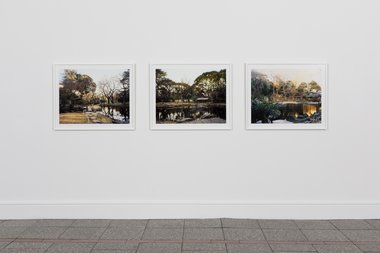
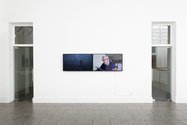

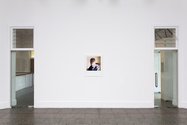
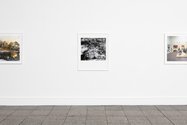

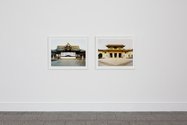
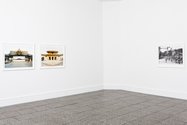
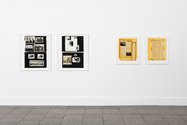
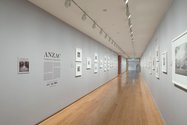
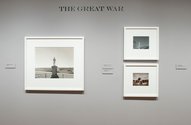
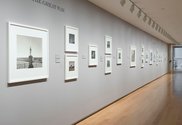
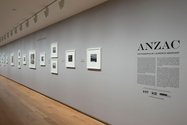
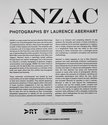
 Advertising in this column
Advertising in this column Two Rooms presents a program of residencies and projects
Two Rooms presents a program of residencies and projects



This Discussion has 0 comments.
Comment
Participate
Register to Participate.
Sign in
Sign in to an existing account.